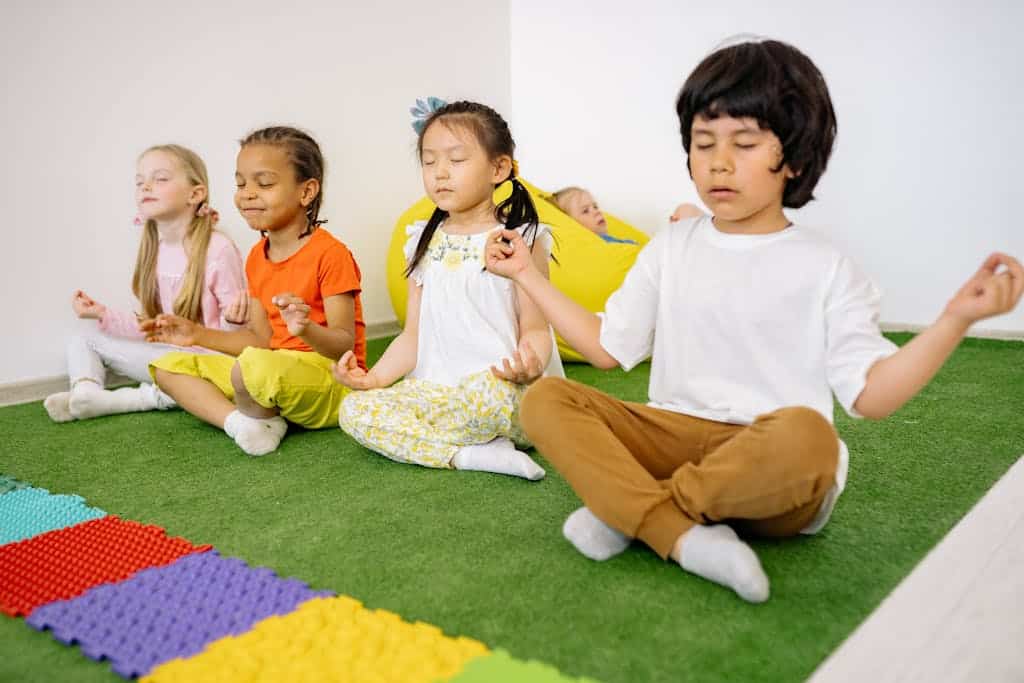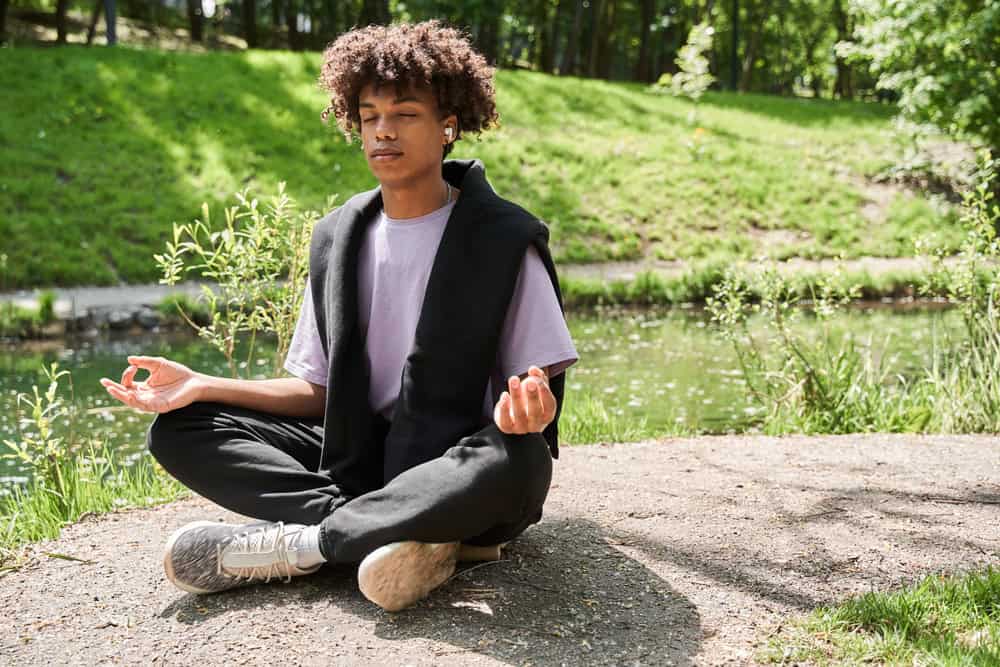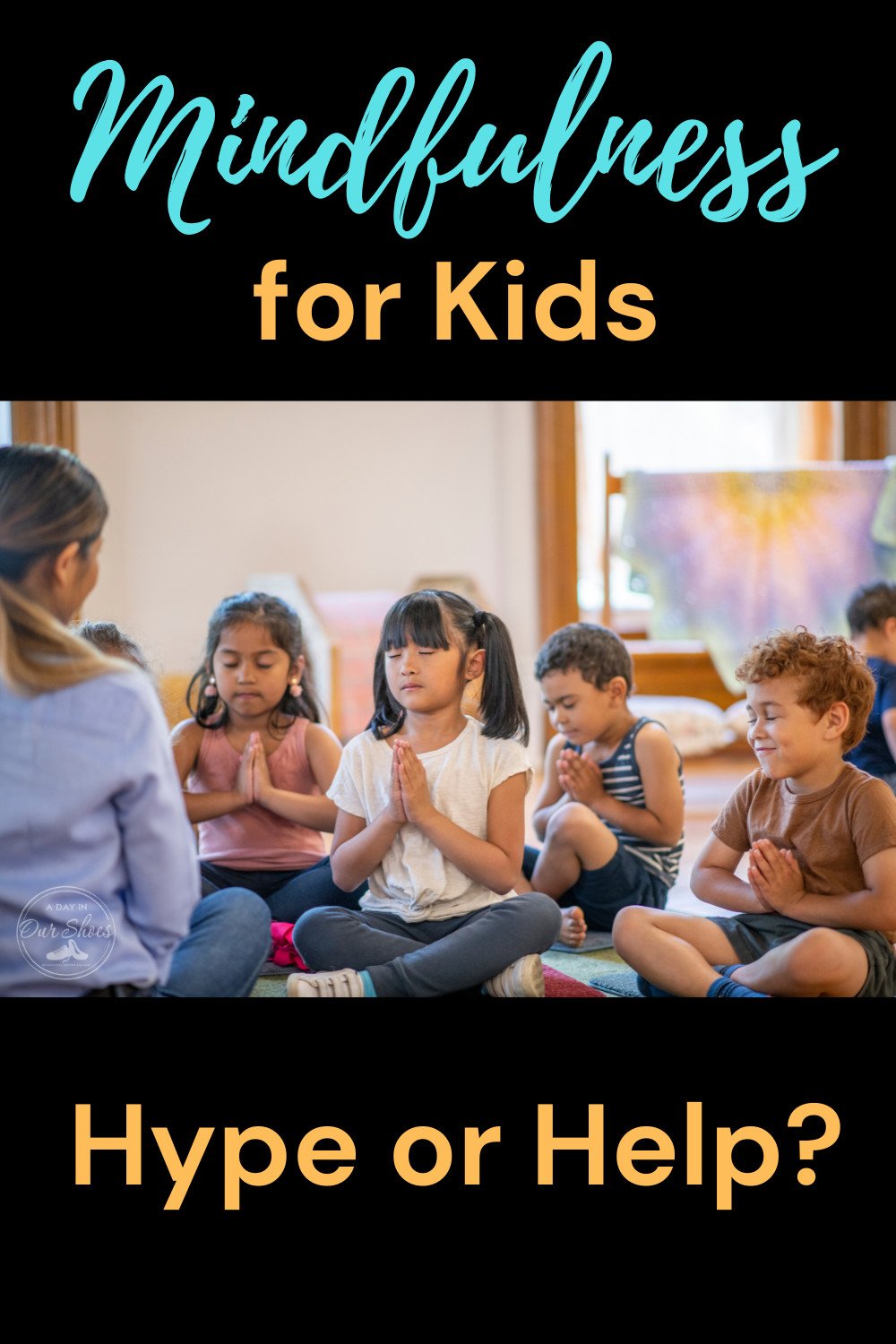Mindfulness for Kids: Does It Really Work?
I’ve been sharing various mindfulness activities on my site for a long time. It’s a concept I was introduced to over a decade ago, but it’s only getting traction recently, in my experience.
Does mindfulness work? Maybe from your experience, it feels like it’s not. But, I’d encourage you to keep going. Because the data says that it’s working!

I’ve been trying to “be more mindful” and do some of these activities myself. I understand the skepticism
Let’s dig in.
What is mindfulness?
Mindfulness is a mental state characterized by being fully present and engaged in the moment, without judgment or distraction. It involves paying deliberate attention to thoughts, feelings, bodily sensations, and the surrounding environment.
Practicing mindfulness often involves techniques such as meditation, breathing exercises, and focused awareness. The goal of mindfulness is to cultivate a greater sense of awareness and acceptance of one’s experiences, both internal and external, without getting caught up in judgments or reactions. By practicing mindfulness regularly, individuals can develop a deeper understanding of themselves, reduce stress, enhance mental clarity, and improve overall well-being.

Mindfulness Ideas for All Ages
- Free Mindfulness Coloring Pages (PDF sheets)
- 26 Free Coping Skills Coloring Pages (PDF sheets)
- 23 Mindfulness Activities for Kids and Teens
- Positive Self Talk: 10 Free Worksheets for Kids and Adults
- How to Calm Yourself Down: 5 Activities for Any Environment
- Free PDF Mental Health Planner and Journal
Examples of Mindfulness Activities
Here are a few examples of mindfulness activities you can try:
- Mindful Breathing: Find a quiet place to sit comfortably. Close your eyes and focus your attention on your breath. Notice the sensations of each inhale and exhale, the rise and fall of your chest or belly. Whenever your mind wanders, gently bring your focus back to your breath.
- Body Scan: Lie down or sit comfortably. Start from your toes and gradually move your attention upward, noticing any sensations or tensions in each part of your body. Take your time to scan through your entire body, bringing awareness to each area without judgment.
- Mindful Walking: Take a walk in nature or simply around your neighborhood. Pay attention to each step you take, the feeling of your feet connecting with the ground, the movement of your body, and the sights and sounds around you. Stay present in the experience without rushing.
- Mindful Eating: Choose a small piece of food, such as a raisin or a slice of fruit. Before eating, observe the food closely with all your senses—notice its color, texture, smell, and any sounds it makes when you touch or bite into it. Slowly take a bite, savoring the taste and texture, and pay attention to the sensations as you chew and swallow.
- Mindful Listening: Find a quiet environment and choose a piece of music or natural sounds, such as birdsong or ocean waves. Close your eyes and immerse yourself fully in the sounds, noticing each note, rhythm, and variation in tone. Let go of any thoughts or distractions, simply allowing yourself to be present with the auditory experience.
These are just a few examples, but there are many other mindfulness activities you can explore, ranging from simple practices to more structured meditation exercises. The key is to approach each activity with an open and curious mind, and to cultivate a non-judgmental awareness of your present moment experience.
Does Mindfulness Work?
Yes, mindfulness has been extensively researched and has shown numerous benefits for mental and physical well-being. Many people who regularly practice mindfulness report experiencing reduced stress, anxiety, and depression, as well as improved focus, emotional regulation, and overall quality of life.
Studies have found that mindfulness-based interventions can lead to changes in brain structure and function, such as increased grey matter density in areas associated with attention, memory, and emotional regulation. Mindfulness practices have also been linked to lower levels of the stress hormone cortisol, improved immune function, and better sleep quality. However, like any skill or practice, the effectiveness of mindfulness can vary from person to person, and it may take time and consistent effort to see significant results. It’s also important to approach mindfulness with realistic expectations and an open mind, as it is not a panacea and may not eliminate all sources of stress or suffering.
Studies Supporting Mindfulness Activities
Here are summaries of a few studies that highlight the effectiveness of mindfulness:
- Mindfulness-Based Stress Reduction (MBSR) for Stress Reduction:
- A study published in the Journal of the American Medical Association (JAMA) found that participants who underwent an 8-week MBSR program experienced significant reductions in stress levels compared to a control group. MRI scans also revealed changes in brain regions associated with stress regulation, suggesting that mindfulness practice can have measurable effects on the brain.
- Mindfulness-Based Cognitive Therapy (MBCT) for Depression Prevention:
- Research published in the British Journal of Psychiatry showed that MBCT, which combines mindfulness practices with cognitive therapy techniques, was effective in preventing relapse in individuals with recurrent depression. Participants who received MBCT were less likely to experience a relapse compared to those who received usual care.
- Mindfulness Meditation for Anxiety Reduction:
- A meta-analysis published in JAMA Internal Medicine examined 47 randomized controlled trials involving over 3,500 participants and found that mindfulness meditation interventions were associated with moderate reductions in anxiety symptoms. The effects were comparable to those of other active treatments, such as cognitive-behavioral therapy.
- Mindfulness-Based Interventions for Chronic Pain Management:
- Numerous studies have shown that mindfulness-based interventions, including MBSR and mindfulness-based pain management (MBPM), can be effective in reducing pain severity and improving pain-related quality of life in individuals with chronic pain conditions, such as fibromyalgia, lower back pain, and osteoarthritis.
These studies represent just a small sample of the extensive research conducted on mindfulness. They demonstrate the potential of mindfulness-based approaches in addressing various mental health issues and improving overall well-being.
Mindfulness and Kids
Researchers have conducted statistical analyses, comparing the test scores of students who participated in mindfulness practices with those who did not, and they have also engaged in discussions with students who underwent mindfulness training.
Here are several key findings from these studies:
- Students consistently continue to utilize mindfulness techniques. In a study conducted across six British schools, approximately 80% of children who received mindfulness training reported still using some of the strategies they learned three months later (Kuyken et al., 2013).
- Mindfulness training demonstrates mental health benefits for students. Months after receiving mindfulness instruction, students showed fewer symptoms of depression, lower stress levels, and better overall well-being compared to their peers who did not receive training (Kuyken et al., 2013).
- Students indicate an improved awareness of their emotions, including feelings of happiness (Ager et al., 2015).
- Students express learning to implement a “pause” button and find a sense of calm (Ager et al., 2015).
- Mindfulness serves as a coping strategy for students. They view these techniques as tools to utilize during times of stress and report actively employing them (Ager et al., 2015; McKeering & Hwang, 2019).
- Students report a heightened understanding of themselves and others (Ager et al., 2015).
- Classroom behaviors of students improve, characterized by fewer disruptions and increased concentration (McKeering & Hwang, 2019).
- Immediately following mindfulness practice, students demonstrate increased relaxation and readiness to engage in learning activities (McKeering & Hwang, 2019).
Keep it up!
If you’re still feeling skeptical, I’d encourage you to keep it up.
Any one activity is not going to erase a mental illness such as anxiety. But with regular participation, when you look back, you probably are making progress.
Here are some mindfulness activities I have here on this site.
Mindfulness
- Free Kindness Coloring Pages (PDF sheets)
- 26 Free Coping Skills Coloring Pages (PDF sheets)
- 23 Mindfulness Activities for Kids and Teens
- 16 Free Finger Tracing Calming Cards
- Ocean Themed Finger Tracing Cards
- Valentine’s Day Yoga for All Ages: Free Printable Yoga Cards
- How to Calm Yourself Down: 5 Activities for Any Environment
- Triangle Breathing: A Simple Stress Relief Technique for All Ages (free worksheet!)
- Positive Self Talk: 10 Free Worksheets for Kids and Adults
- Do Chair Bands for ADHD work?
- 15 Affordable Calm Down Corner Ideas for School or Home
- What is the Star Breathing Technique for Kids?
- What is the 5 Finger Breathing Technique to Calm Kids?
- 115 Morning Meeting Questions and Ideas for All Ages
- Does mindfulness work?


